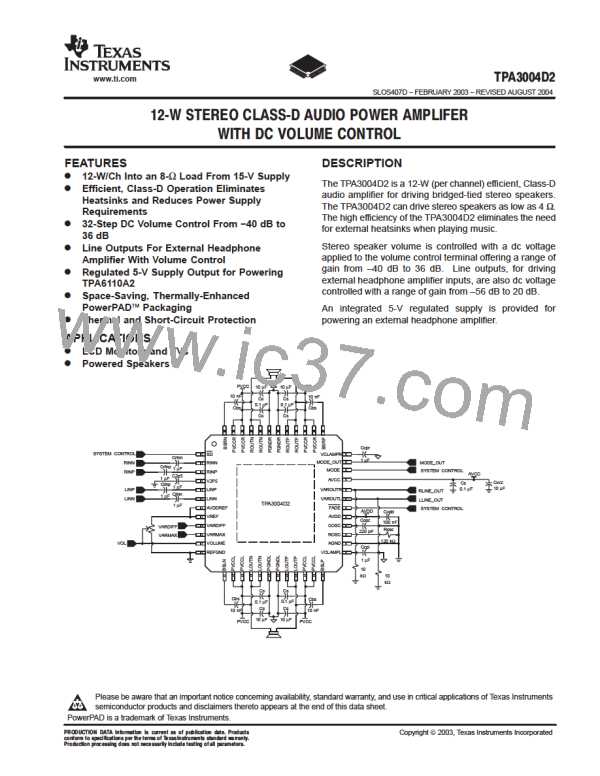ꢀ
ꢁꢂ
ꢃ
ꢄꢄ
ꢅ
ꢆ
ꢇ
www.ti.com
SLOS407D − FEBRUARY 2003 − REVISED AUGUST 2004
CLASS-D OPERATION
This section focuses on the class-D operation of the TPA3004D2.
Traditional Class-D Modulation Scheme
The traditional class-D modulation scheme, which is used in the TPA032D0x family, has a differential output
where each output is 180 degrees out of phase and changes from ground to the supply voltage, V . Therefore,
CC
the differential prefiltered output varies between positive and negative V , where filtered 50% duty cycle yields
CC
0 V across the load. The traditional class-D modulation scheme with voltage and current waveforms is shown
in Figure 37. Note that even at an average of 0 V across the load (50% duty cycle), the current to the load is
high, causing high loss, thus causing a high supply current.
OUTP
OUTN
+12 V
Differential Voltage
0 V
Across Load
−12 V
Current
Figure 37. Traditional Class-D Modulation Scheme’s Output Voltage and
Current Waveforms Into an Inductive Load With No Input
TPA3004D2 Modulation Scheme
The TPA3004D2 uses a modulation scheme that still has each output switching from 0 to the supply voltage.
However, OUTP and OUTN are now in phase with each other with no input. The duty cycle of OUTP is greater
than 50% and OUTN is less than 50% for positive output voltages. The duty cycle of OUTP is less than 50%
and OUTN is greater than 50% for negative output voltages. The voltage across the load sits at 0 V throughout
2
most of the switching period, greatly reducing the switching current, which reduces any I R losses in the load.
22

 TI [ TEXAS INSTRUMENTS ]
TI [ TEXAS INSTRUMENTS ]